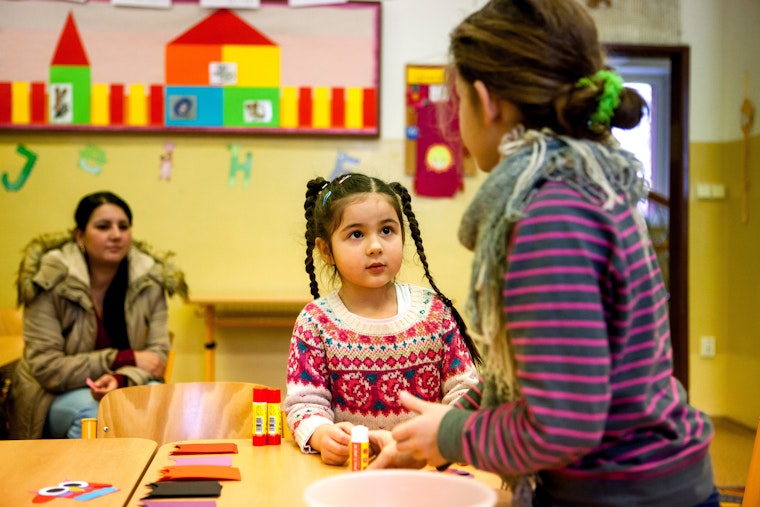Inclusive Education Reform Presents a Litmus Test for the Czech Republic
By Ostalinda Maya & Štěpán Drahokoupil

This October, voters in the Czech Republic upended the political landscape that had prevailed in the country since 1993. A wave of support for anti-establishment parties shifted the parliament firmly to the nationalist right, which will likely move Prague closer to the anti-Brussels stance of Hungary and Poland.
With head of the populist Ano movement, Andrej Babis, now seeking to form a minority government, the shape of future policies remains unknown. But one potential fault line in the relationship with the European Union is already apparent: the treatment of Roma, who make up an estimated four percent of the population of the Czech Republic, and in particular the continuing segregation of Roma children in the Czech school system. This issue may yet become a litmus test of the new government’s commitment to civic participation and to European values.
The question had already led the European Commission to issue what it calls infringement proceedings against the previous Social Democratic Party–led government in 2014, on the grounds that the treatment of Roma children constitutes a breach of EU antidiscrimination law. The government has also been repeatedly called to account by the Council of Europe for its failure to implement a November 2007 judgment of the European Court of Human Rights.
That ruling, D.H. v. the Czech Republic, concluded that Roma elementary school children were suffering discrimination by being disproportionally funneled into schools for children with special needs that offered them only a limited curriculum. Despite repeated government initiatives to address this, Roma children are still far more likely than non-Roma children to be diagnosed as having “mild mental disabilities” that require special education.
The damage done by this system is clear. Only some 30 percent of Roma aged 20–24 have had a general or vocational secondary education, compared to 82 percent of non-Roma.
The new government is being formed after the launch of a set of school reforms that are finally supposed to create a properly inclusive education system—by establishing the principle that pupils with special educational needs should be provided with adequate support in mainstream schools.
But those reforms, introduced in September last year, were bitterly opposed by many, including a group representing the teachers who ran the special needs schools. The anti-reform lobby attacked human rights groups and organizations working in education who supported the reform, questioning their legitimacy and their right to take part in the discussion; they even portrayed them as “traitors of the Czech nation,” in an echo of the anti-NGO rhetoric more usually associated with the governments of Poland and Hungary.
Against this background, many parties in parliament are afraid to speak in favor of inclusive educational reform, fearing the reaction from voters and from hostile media outlets. The outlook for proper inclusion of Roma students seems quite bleak. Yet a survey of teachers and head teachers after the first year of the reforms, organized by the Open Society Fund Prague together with two other partners, suggests that some progress is being made in providing the support needed.
In addition, on the ground, the struggle over the past 10 years to implement the 2007 European Court of Human Rights ruling has also led to a new level of commitment by Roma families themselves to organize to demand fair treatment for their children, most notably in the city of Ostrava, home of the families who brought the D.H. case.
Given the limited action by the government, these families decided to get organized. Over the past four years, these parents have enrolled and kept in mainstream schools over 300 Roma children. But the path has not been easy. They have met with resistance from some of the teachers and local authorities who have tried to use the enrollment process to exclude Roma. This led to the parents, with the support of the European Roma Rights Centre, successfully getting a court to order one school to change its practices.
By shifting patterns of enrollment, these parents are also influencing how resources are allocated, leading to the closure of multiple segregated classes and, more recently, the planned closure of an entire school. In the process, these parents have built an association with nearly 200 members.
On the 10th anniversary of the D.H. judgement, it’s clear that much remains to be done to give Roma children a fair opportunity at school. The possible next steps will be discussed this week in Prague, at a gathering that will include officials from the Czech government and representatives of the European Union and the Council of Europe, together with teachers, advocates, and Roma parents.
While waiting for justice from their government, the families of Ostrava have provided an example of how to move forward—an example that they plan to share with other Roma communities across the country.
Štěpán Drahokoupil leads works on Roma education issues at the Open Society Fund Prague.